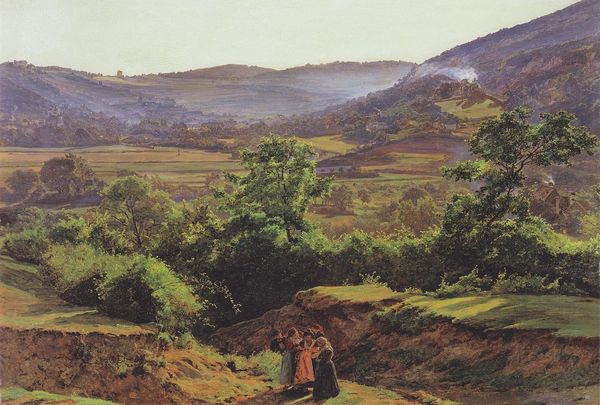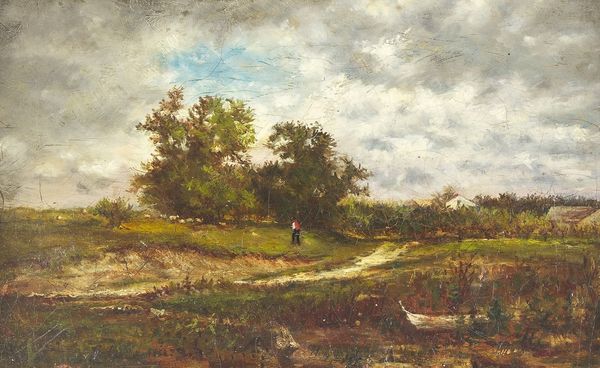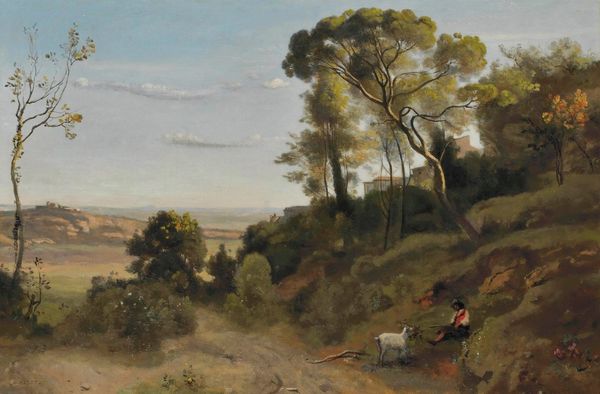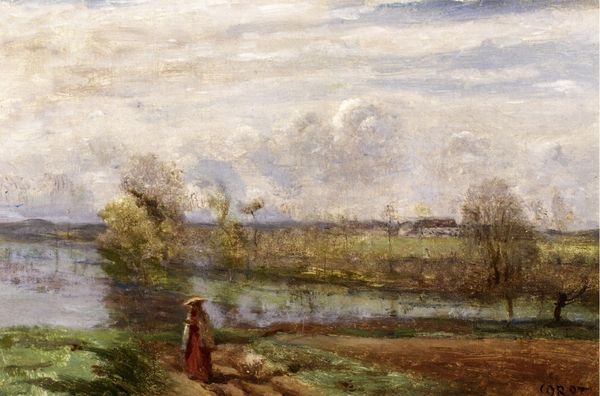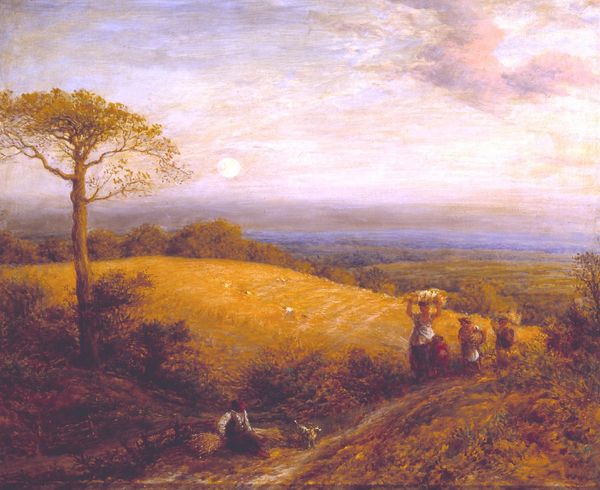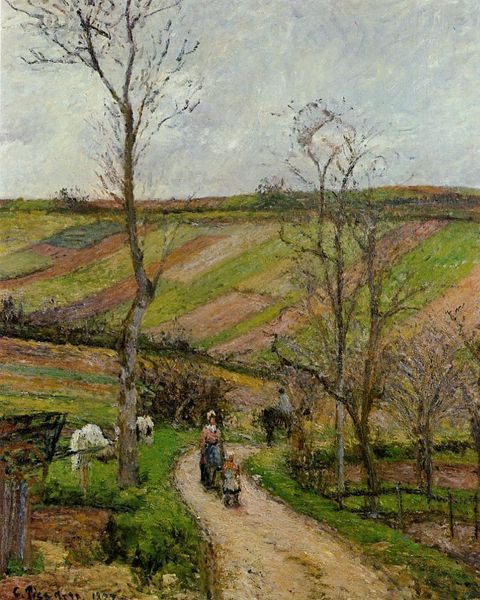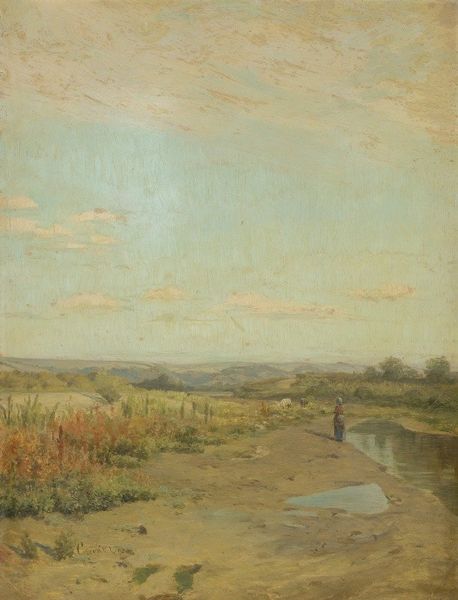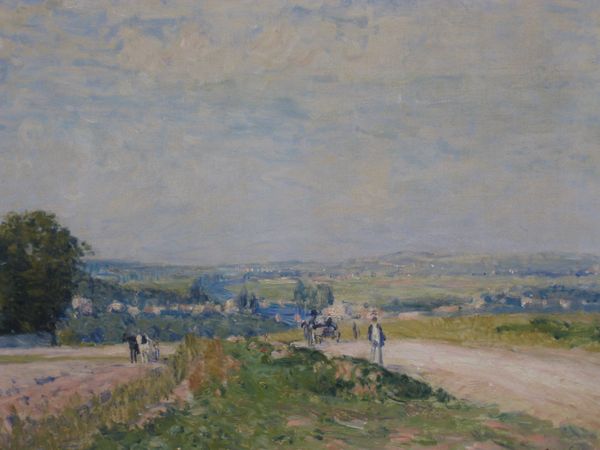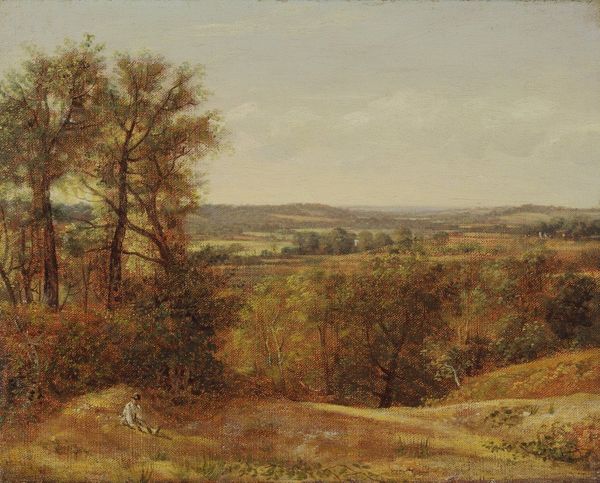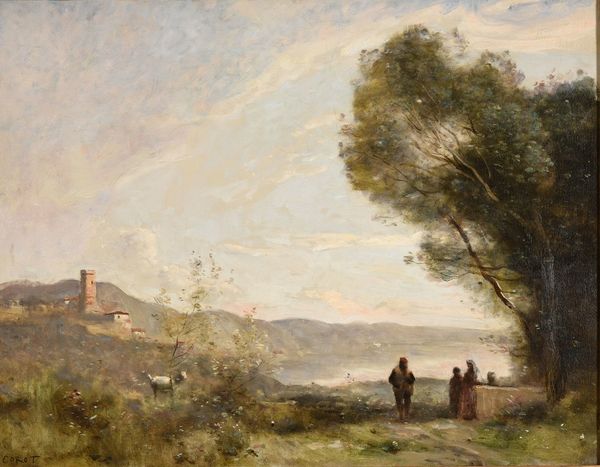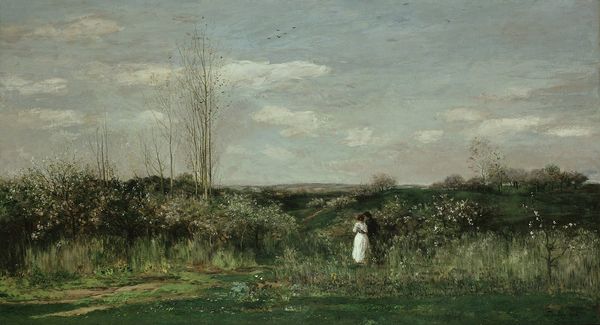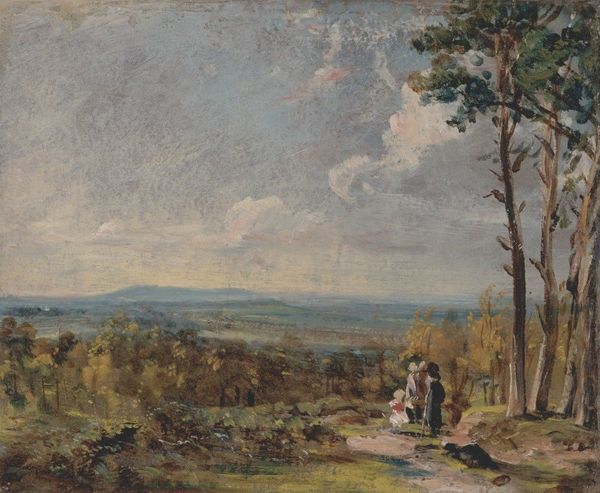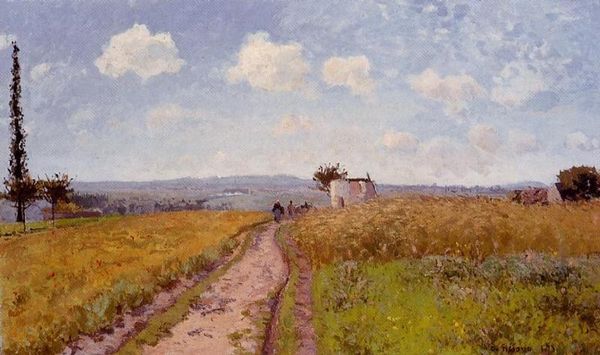
plein-air, oil-paint
#
portrait
#
impressionism
#
plein-air
#
oil-paint
#
landscape
#
impressionist landscape
#
oil painting
Copyright: Public Domain: Artvee
Curator: I'm struck by the almost dreamlike quality of this scene. The colours are muted, the details soft, creating a sense of gentle tranquility. Editor: That's a perfect way to describe the impression. We're looking at "La route de Rouen, les hauteurs de l’Hautil, Pontoise," painted by Camille Pissarro in 1872. What's interesting about this work is how it places figures within the agricultural landscape during a critical point in France’s evolving relationship with modernity. Curator: Precisely. The figures of the woman and child offer a point of entry into discussions around the domestic sphere's relation to labour and the evolving roles assigned within society. Their presence reads as intentional – are they overseeing, spectating, or participating? How might this arrangement of figures challenge our conceptions of pastoral imagery? Editor: Well, the institutional support for plein-air painting was growing rapidly. Salons were becoming more receptive. Pissarro's participation would have signaled a certain progressive bent to galleries and patrons at that moment in time. Curator: But what does “progressive” really mean here? To whom? Is the depiction of nature absent of laborers or farmers, even "progressive" or complicit? In some ways this image, of leisurely figures observing cultivated landscapes, performs class privilege under the guise of naturalism. Editor: An excellent point. This piece, with its visible brushstrokes and subdued palette, stands as a potent symbol of the social, economic, and cultural transformations defining the late 19th century. It's like a window into a specific moment in time. The Pontoise landscape becoming the perfect vehicle for exploring these changes through visual art. Curator: Yes. When looking at Pissarro’s work, then, it isn't merely about aesthetic appreciation but, perhaps more vitally, about uncovering layers of socio-political dialogues woven in and out of artistic depictions themselves. Editor: Absolutely, a powerful reminder of the conversations embedded within art history.
Comments
No comments
Be the first to comment and join the conversation on the ultimate creative platform.
